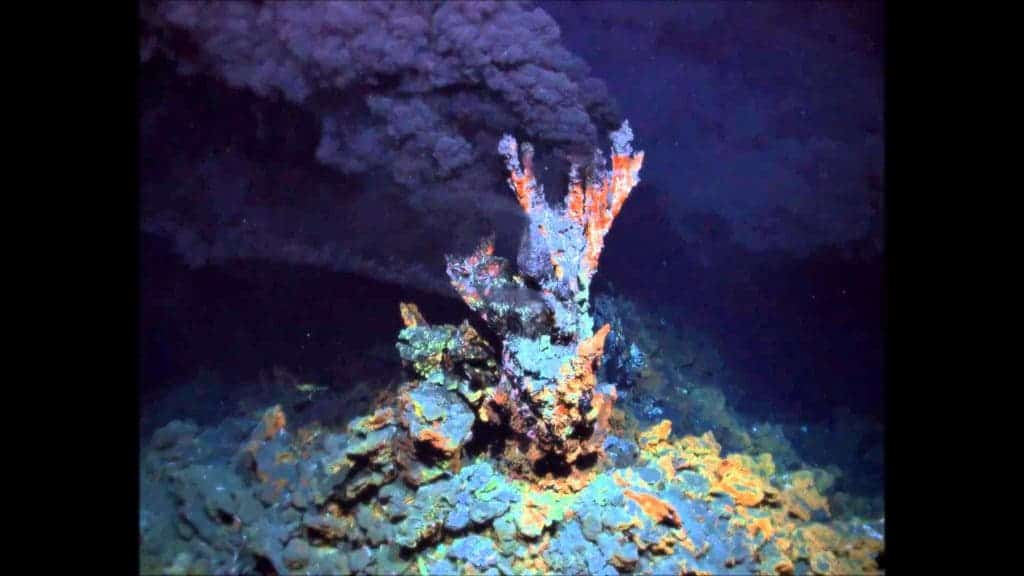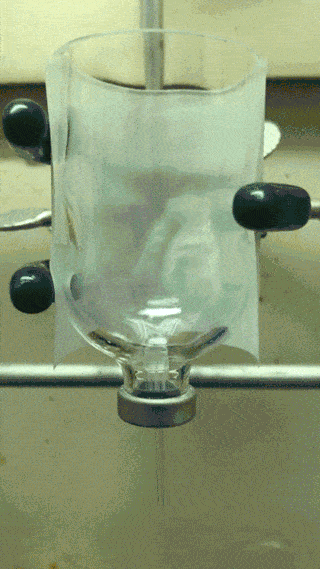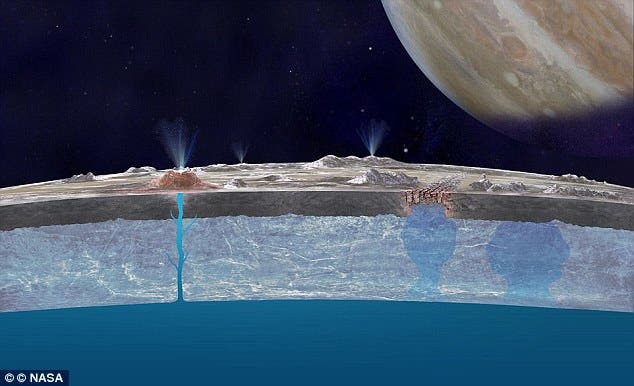
The origin of life is one of the most important questions in science. For NASA, answering this question is especially important because it enables scientists to narrow down their search for alien life, in the solar system or beyond. In a new study, a research team at NASA’s Jet Propulsion Laboratory in Pasadena, California, reported how it managed to create amino acids — the basic building blocks of life that, like pieces of LEGO, assemble into proteins — in an environment that simulates what the ocean floor was like four billion years ago.
Life in a jar
Researchers made miniature seafloors by filling beakers with a solution that mimics Earth’s primordial ocean, including a hydrothermal vent — cracks in the seafloor where hot fluid escapes from the crust. These porous geological structures are produced by chemical reactions between solid rock and water, as alkaline fluids from the Earth’s crust flow up the vent towards the more acidic ocean water. This interaction leads to natural proton concentration differences remarkably similar to those powering all living cells.
Like an underwater chimney, hydrothermal vents produce a warm environment that is constantly in flux, which is why biologists have identified them as a probable hotspot for the formation of life.
“Understanding how far you can go with just organics and minerals before you have an actual cell is really important for understanding what types of environments life could emerge from,” Laurie Barge, and astrobiologist and the first author on the new study, said in a statement. “Also, investigating how things like the atmosphere, the ocean and the minerals in the vents all impact this can help you understand how likely this is to have occurred on another planet.”
Barge and colleagues combined water and minerals, along with pyruvate and ammonia, which are precursor molecules to amino acids. The solution was heated to around 158ºF (70ºC), the average temperature of a hydrothermal vent, and researchers adjusted the pH in order to mimic an alkaline environment. Oxygen was carefully removed until it reached a low concentration, similar to that of early Earth when cyanobacteria had yet to transform the planet’s suffocating atmosphere. Finally, the researchers also added iron hydroxide, also known as “green rust”, which was abundant billion of years ago.

The researchers found that the green rust reacted with the oxygen from the solution, producing the amino acid alanine and the alpha hydroxy acid lactate. The latter is important because alpha hydroxy acids are the byproducts of amino acid reactions, and are therefore considered to be essential components of the complex organic molecules that might form life.
“We’ve shown that in geological conditions similar to early Earth, and maybe to other planets, we can form amino acids and alpha hydroxy acids from a simple reaction under mild conditions that would have existed on the seafloor,” said Barge.

Previously, researchers had investigated whether the right ingredients for life could be found in hydrothermal vents or if they could supply enough power to drive important chemical reactions. However, this was the first time that scientists produced the precursors to life in a hydrothermal-vent-like environment.
Such environments are believed to exist elsewhere in the solar system, beneath the thick ice that covers Jupiter’s moon Europa and Saturn’s moon Enceladus. In the future, NASA would like to send robotic exploration missions to these worlds that might drill through the ice and gather evidence of amino acids and other biological signatures.
“We don’t have concrete evidence of life elsewhere yet,” said Barge. “But understanding the conditions that are required for life’s origin can help narrow down the places that we think life could exist.”
The findings appeared in the journal Proceedings of the National Academy of Sciences.


